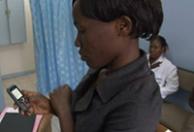Family Planning: Reaching New Frontiers Through the Use of Mobiles
 Family planning has gone through tremendous evolutions in the past 100 years. It used to be that contraceptives, STDs and all things related to sexual health were not only heavily censored, but often downright omitted in public health studies and practice. But as the rapid increase in population was identified as a public health issue (an emergency in some countries) more and more attention was paid to family planning.
Family planning has gone through tremendous evolutions in the past 100 years. It used to be that contraceptives, STDs and all things related to sexual health were not only heavily censored, but often downright omitted in public health studies and practice. But as the rapid increase in population was identified as a public health issue (an emergency in some countries) more and more attention was paid to family planning.
Although great strides have been made, according to the World Health Organization (WHO), family planning has “dropped down the list of international priorities” in the past decade. Funding cuts and politicization have left those working in family planning fighting a tough battle in many of the areas in the world that need the most aid. Still, innovative methods of information dissemination and the use of technology have continuously been shedding light on a new age in family planning – a time when imparting knowledge can directly lead to empowerment that could result in better choices and healthier communities.
Mobile technologies have given public health interventions a new pace and capacity for sharing information. For family planning, this is game-changing. Unlike many other public health issues, such as malaria or chronic disease, family planning and sexual health carries with it unique taboos. The need for privacy may be high, particularly with vulnerable populations such as women. Mobiles provide an opportunity to navigate through these potential barriers, giving people the tools to make better decisions.
On May 23rd, USAID’s Office of Population and Reproductive Health, the PROGRESS Project, and the FAM Project hosted a meeting focusing on the use of mobile technologies in family planning. Presentations were given on projects such as m4RH and CycleTel™, and covered topics such as the complexity of content and how mHealth breaks barriers, particularly for the field of family planning. Many nuances were discovered and some strongly held beliefs in the mHealth world were questioned. For example, the complexity and amount of content for family planning messaging through mobiles was thoroughly evaluated. For a field that is a land mine for taboos, the way messages are worded should be very particular to the cultural contexts of the intervention. Also, it is important to take into account the safety of the recipients of messaging. Sometimes, women may be taking contraceptives without their husband’s knowledge. How can content be tailored to such a circumstance that is integral to the safety of the woman receiving the messages? In addition, we have to ask the question whether focusing on the men in the household could be positive, and how can we do so while still being culturally sensitive?
There was also a discussion on the pure mechanics of messaging. There is a fine line between losing the users’ interest because of a lack of messaging and spamming users. Only testing and re-testing can reveal the optimal number of messages. In addition, the type of message will be important. Esoteric and winding messages will surely lose the users’ attention; however, short, crisp messages must have the right amount of substance to make it informative and relevant.
There are many benefits to utilizing a device like the mobile phone that exceeds the number of people in the world. Family planning, no stranger to harsh criticism from many different spectra, is able to find comfort in the fast nature of information dissemination and the hope for anonymity within a population that direly needs it – but only after a thorough investigation of the culture it is operating within.






Leave a Reply
Want to join the discussion?Feel free to contribute!